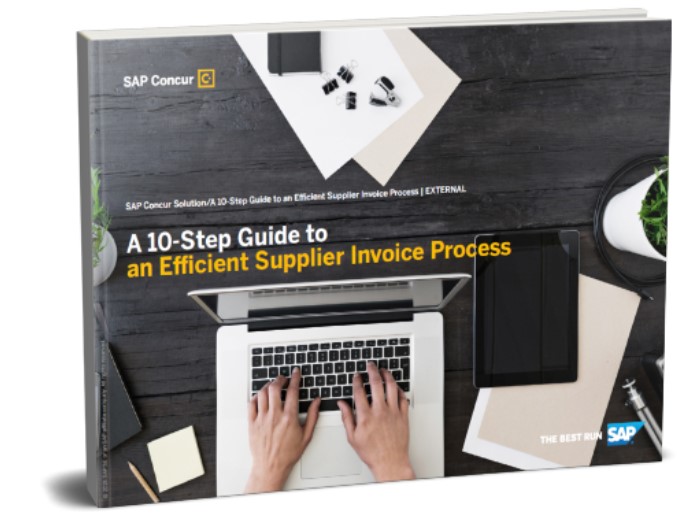Control Company Costs
Why It’s Important to Put a Purchase Order Process in Place (and How to Convince Your Employees)
Picture the scene. You run one of the largest manufacturers in the world. One day, a part in your most important machine breaks down. To get it fixed quickly, one of the operatives goes to the nearest hardware store and buys a replacement part on their credit card. They fit the part on the machine and production restarts.
The problem is, the part wasn’t fit for purpose. This was only discovered when a £500,000 order was quality checked and had to be dismissed because it wasn’t within the agreed guidelines.
There was no time to fix the part and redo the order before late penalties on the order kicked in. In total, the mistake cost the manufacturer £1 million.
This true story was shared with us by Sonia Blaudez, Senior Presales Consultant at SAP Concur, as the perfect example of why businesses need a purchase order (PO) system. Whilst a PO system helps a business manage its costs more efficiently, it also puts a contract in place and ensures employees follow an approved buying channel to stop situations like this developing.
Sonia joined us in April 2020 after spending ten years in accounts payable roles, which included implementing PO systems for several businesses. We asked her for the lowdown on PO systems and here’s what she had to say; ‘If you’re thinking about implementing a PO system in your business, it’s a must-read.’
How a PO System Helps the Finance Function
When you have a PO system in place there is increased visibility as soon as the PO is raised. In terms of financial planning, you can see – for any moment in time – the cash provision you need. It’s a vital benefit at any time, but particularly in times of uncertainty.
This visibility will allow the business to review and potentially stop any spend before it incurs. It will also help the employees to choose the correct suppliers whom the organisation has negotiated prices and discounts with. A PO system is therefore a real asset not only for financial planning but for cost saving purposes. It lays the foundation to manage cash better and optimise working capital.
But as well as giving visibility, it also transforms the life of the finance function because it makes the one touch invoice a reality. Without a PO system, invoices often arrive in the finance department with line items such as ‘Provision of July services’. It isn’t clear which department it’s relevant to or who was responsible for buying the services.
Finding the right department, guessing the correct accounting allocation and the right authorisation can take at times 15-20 emails, with the invoice ping-ponging around the business trying to find a home. If the system is paper-based and manual, this guess work can often delay payments which in turn will affect the organisation’s ability to negotiate better prices and terms.
“Without a PO system, invoices often arrive in the finance department with line items such as ‘Provision of July services’. It isn’t clear which department it’s relevant to or who was responsible for buying the services.”
A purchase order system stops that from happening. And with systems such as Concur Invoice and Purchase Request, invoices and POs are matched automatically, saving time and increasing both accuracy and productivity.
How to Drive Adoption of a PO System
When you’re implementing a PO system, the first thing to do is engage with all your departments and analyse their spend. Understanding how much is spent on what will help you tailor the messaging and training. From there, make sure you customise your PO solution so it meets their needs and the needs of the business. When it’s logical for the people using it, they’re more likely to adopt it. Irrevocably, the initial analysis will reveal some bad practices and it is important to address these as part of the training.
A PO system is almost always easy to use. It means adoption isn’t necessarily about training people in how to use the software, it’s about educating them in its importance and managing change effectively.
A typical order process before a PO system is in place involves a team member calling a supplier, placing an order and waiting for it to arrive. When the PO system is in place, this changes. The team member now has to login to the system and raise a PO. When the order is fulfilled, the team member has to login to the system again to confirm receipt. In many instances, this new process is perceived as adding a lot of extra unnecessary work to their already full workday. This is so because team members end up duplicating effort – calling the supplier to place an order and also raising a PO after the fact.
As they see this as wasted effort, they tend to stick with the old way of doing things because it worked perfectly well as far as they were concerned. Telling employees who have used what they see as an effective process that they must start doing things differently is the biggest challenge you will encounter when implementing a new PO system.
To help drive adoption, think about the requirements of each department and put together relevant training packages to show them the advantages of the new way of working.
For example, while the facilities team will be familiar with ordering something tangible such as consumables and tools, the HR team will be thinking about invoices for services supplied by temporary workers – your training approach for each department needs to recognise this.
Recognise too that some departments have to place orders without knowing accurate costs until afterwards – catering for an event is a classic example. Blanket POs provide the solution, giving the finance function visibility without hampering the department in question. Say for example they think the catering costs for an event will be around £3,000. They can raise a blanket PO for £5,000 to be on the safe side. When the invoice arrives for £3,250, they review and receipt/approve the relevant amount.
To drive adoption, ask departments to consider different ways of working. For example, rather than individual team members raising their own POs, they could consider assigning a junior member as a ‘super user’ who places POs on behalf of every member of the team.
Finally, remind them of the example that opened this blog post. A PO gives the business a level of reassurance and protection that could be vital.
A PO System Gives You Insight and Control
There is no doubt that a PO system is a big change for a business. For people who may have had a non-PO way of working for many years, it may seem like unnecessary bureaucracy. But the benefits it brings to both the finance function and the wider business are impressive. Maximising those benefits requires carefully planned change management that brings the whole business with you.
Find out more about establishing effective invoice processes in our ebook: A 10 Step Guide to an Efficient Supplier Invoice. Process or visit www.concur.co.uk/invoice for more info.

